When we talk about vanilla, we tend not to think of the plant. Instead, we think about the spice sourced from Orchids of the vanilla genus and the many commercial, practical, and culinary purposes that come with it. Want to learn more about vanilla plants? Stick with us to find out the most common varieties, their defining characteristics, and more.
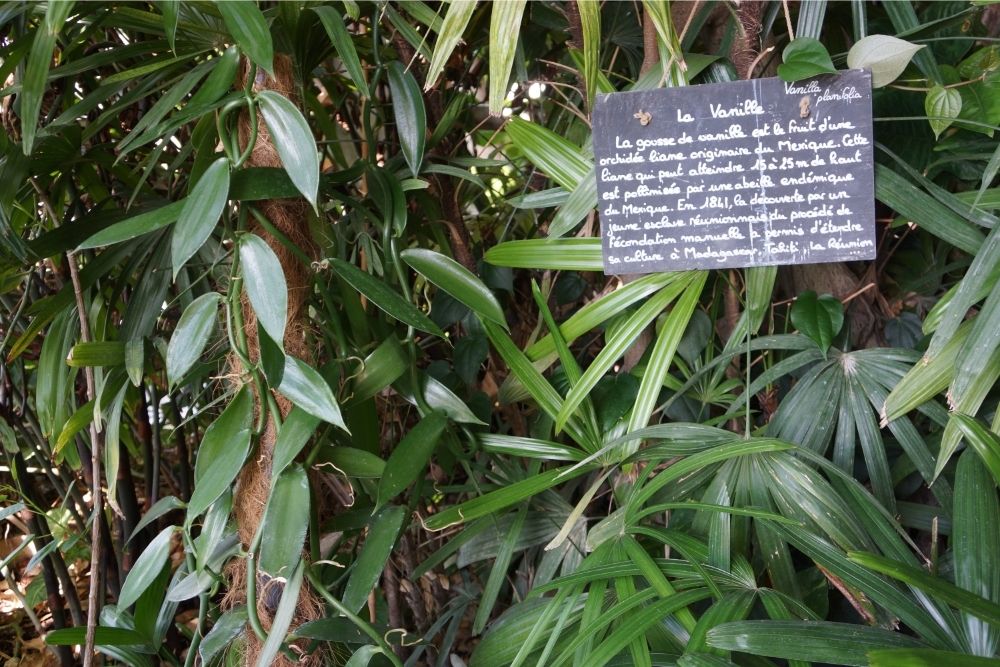
The first known vanilla recipe appeared in 1805, and since then, vanilla has been used in beverages, soft drinks, fragrances, baked goods, and more. We love vanilla for its versatility and its comforting but lightly spiced and exotic scent.
1. West Indian Vanilla
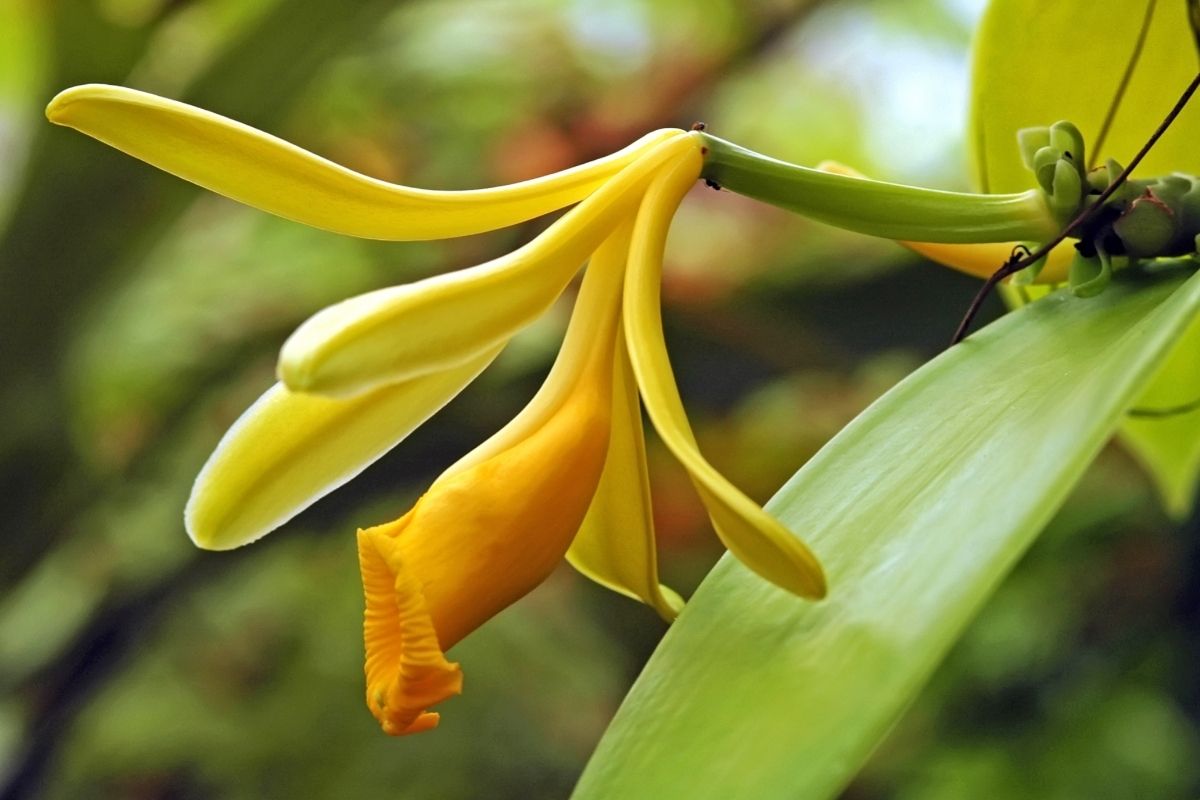
First up, we have west Indian vanilla. Sometimes called the vanilla pompona, west Indian vanilla is a species of perennial herb that comes from the orchid family. This species is a climbing orchid, and it boasts some distinctive fleshy roots and long thin stems that climb up and around tree trunks.
The leaves of the west Indian vanilla are dark and glossy. The west Indian vanilla produces 10-15cm long fruits, but some can grow as large as 30cm. These fruits are also called vanilla beans or pods, and each pod contains thousands of small black seeds.
This species is usually pollinated by euglossine bees, also called orchid bees. Hummingbirds are secondary pollinators. Once they’ve been pollinated, the flowers can produce the pods used in commercial vanilla production.
West Indian vanilla usually grows in forests in Central America and Mexico, and it grows on trees to receive an adequate amount of sunlight.
2. Tahitian Vanilla
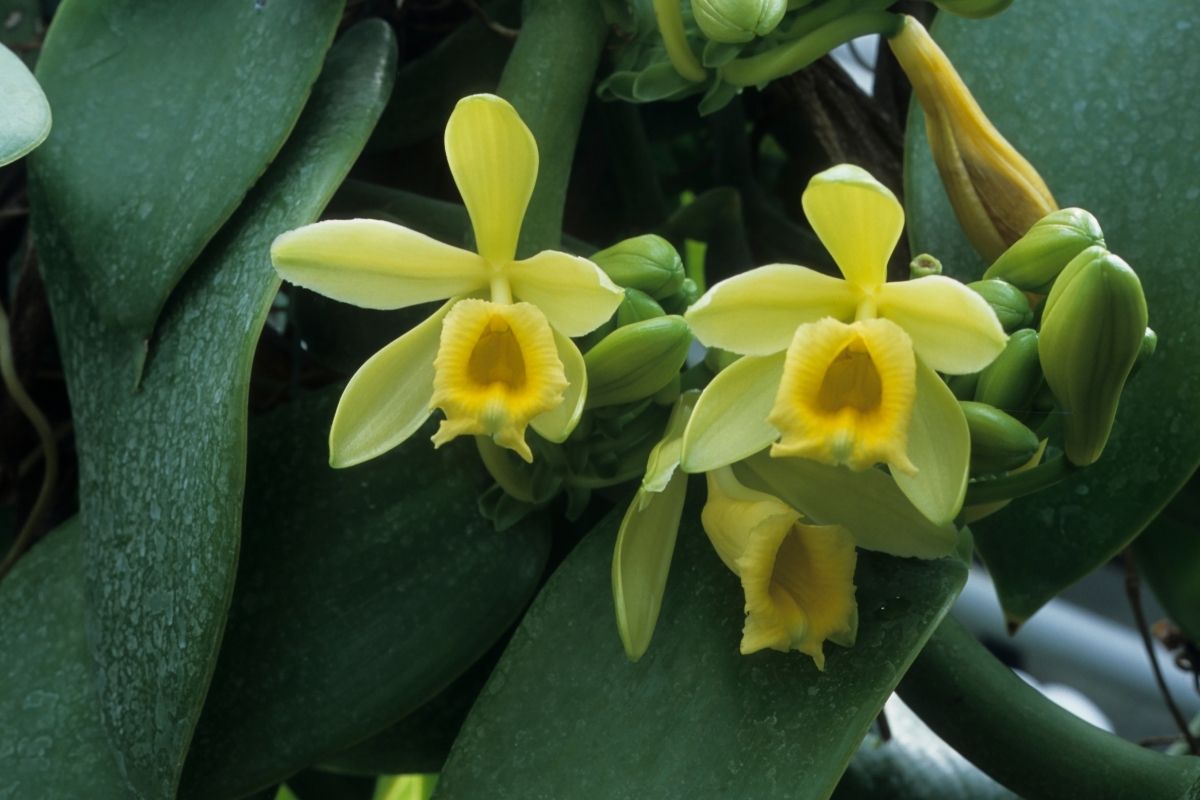
Now we have Tahitian vanilla. Tahitian vanilla, also called vanilla tahitensis, is a type of orchid from the vanilla genus. The Tahitian bean flowers appear in clusters on the vine, and unlike Mexican or Madagascan vanilla, they’re mostly white.
Tahitian vanilla flowers often have a hint of pale yellow, and one vanilla bean flower produced only one fruit. Rather uniquely, these flowers last for only a few hours, making each one an incredibly precious source.
The vanilla beans are usually staked in a greenhouse or outdoors to gain better control over humidity.
Tahitian vanilla extract is a favorite among chefs across the world. The extract can be used in sugar or rum and added to hundreds of recipes. If you’re lucky enough to have access to a Tahitian vanilla plant, you can even make the extract yourself.
Simply place your vanilla beans in a solution of alcohol, shake, and leave them in direct sunlight for around eight weeks. This will produce 100% Tahitian extract to use in your dishes.
3. Leafless Vanilla

Leafless vanilla, also called vanilla barbellata or the worm vine, can be found in the West Indies and South Florida. It can grow up to 100 feet long and sports 3.5-inch blooms.
The seedlings of leafless vanilla are terrestrial and germinate in a thick humus layer while the vine grows upwards. The aged vines eventually die, which leaves the leafless vanilla orchid completely epiphytic.
The vines of leafless vanilla will turn orange when exposed to full sun, and they can grow up to 20cm in length.
With the right amount of sunlight, the leafless vanilla can be easy to grow, and it grows all year round. This species is one of four found in Florida, and it’s one of the largest out of all the species.
4. Chamisso’s Vanilla

Chamisso’s vanilla, or vanilla chamissonis, is another species of orchid native to South America. This is native to many places, including Mata Atlântica, Pernambuco, São Paulo, Rio De Janeiro, and more.
This type of vanilla orchid is named after German poet and Botanist Adelbert von Chamisso.
Chamisso’s vanilla is characterized by its fleshy, pale green leaves, and it tends to bloom in late spring and early summer.
5. Mexican Vanilla
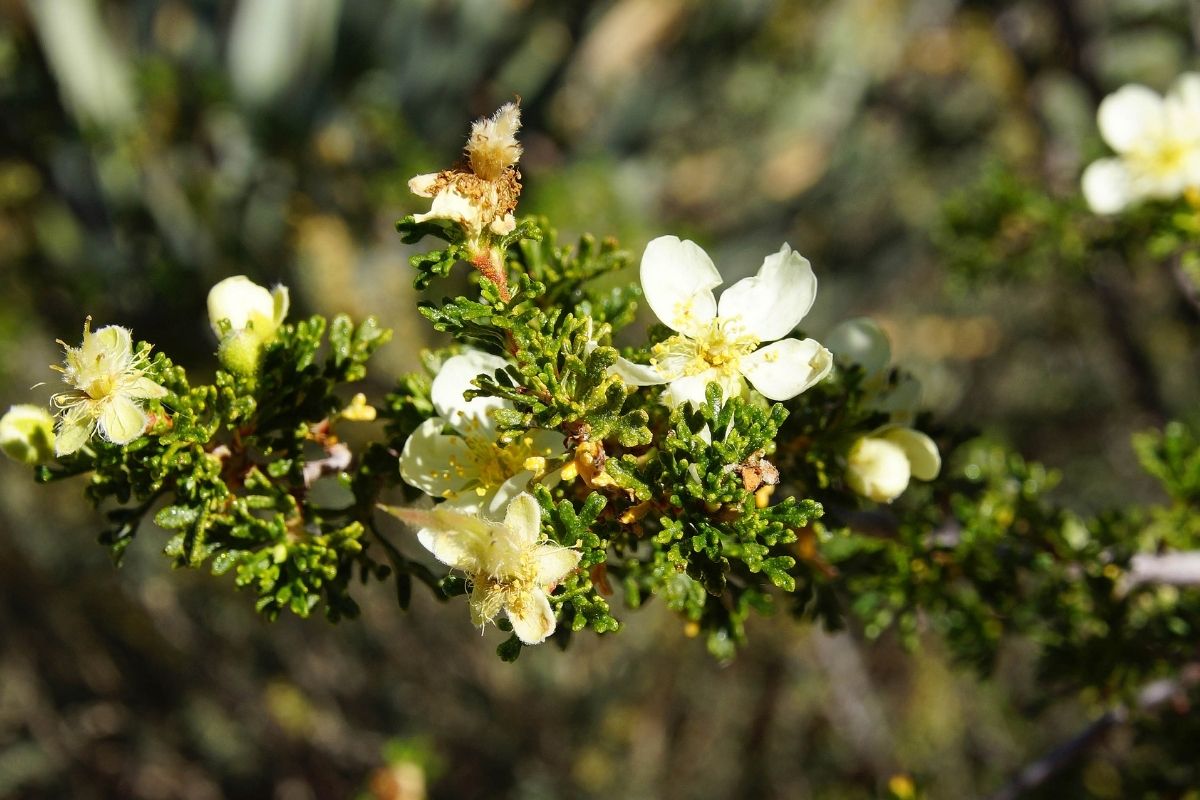
Next on our list is Mexican vanilla. Mexican vanilla, and sometimes its name is vanilla Mexicana or scentless vanilla, is in Mexico, Central America, the West Indies, southeast Florida, and northern South America.
This orchid has many branches vines, some of which can grow as high as 15m. These plants produce just one oval leaf per node, and as its vines grow upwards, roots begin to attach to the surface of the tree.
Over time, the lower part of the vine begins to die, leaving the orchid to grow as an epiphyte.
In Florida, this orchid is listed as endangered, and it’s considered a vulnerable species across the world.
6. Vanilla Planifolia
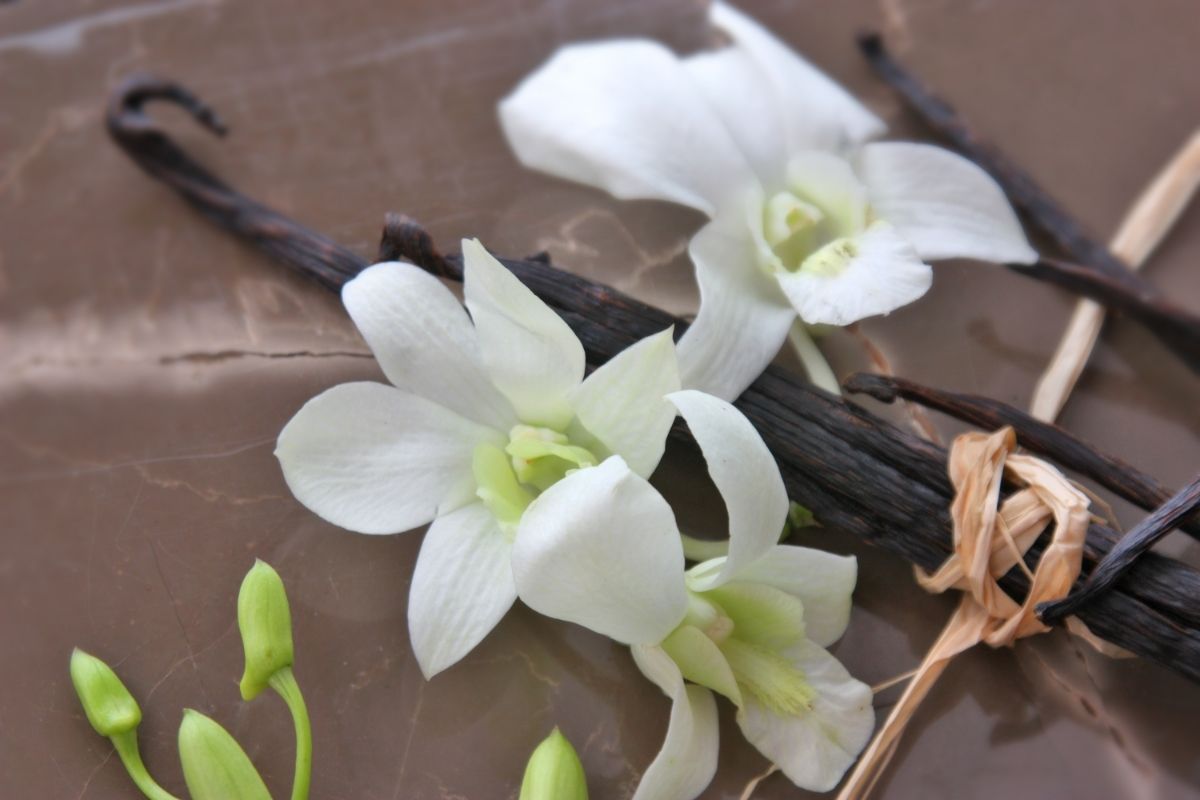
Vanilla planifolia, or flat-leaved vanilla, is another species of the vanilla orchid. This species is native to Belize, Guatemala, and Mexico. Vanilla planifolia is one of the most common sources of commercial vanilla flavoring, and its high vanillin content is highly favorable.
The vanilla planifolia has been listed as endangered, and its population is declining worldwide.
The flowers of the vanilla planifolia are a greeny-yellow, and they’re roughly 5cm in diameter. When the flowers bloom, they last only a day and must be pollinated manually in the morning if you want their fruit.
These plants are self-fertile, and to pollinate them, you only need to transfer the pollen from the plant’s anther to the stigma.
7. Vanilla Pilifera
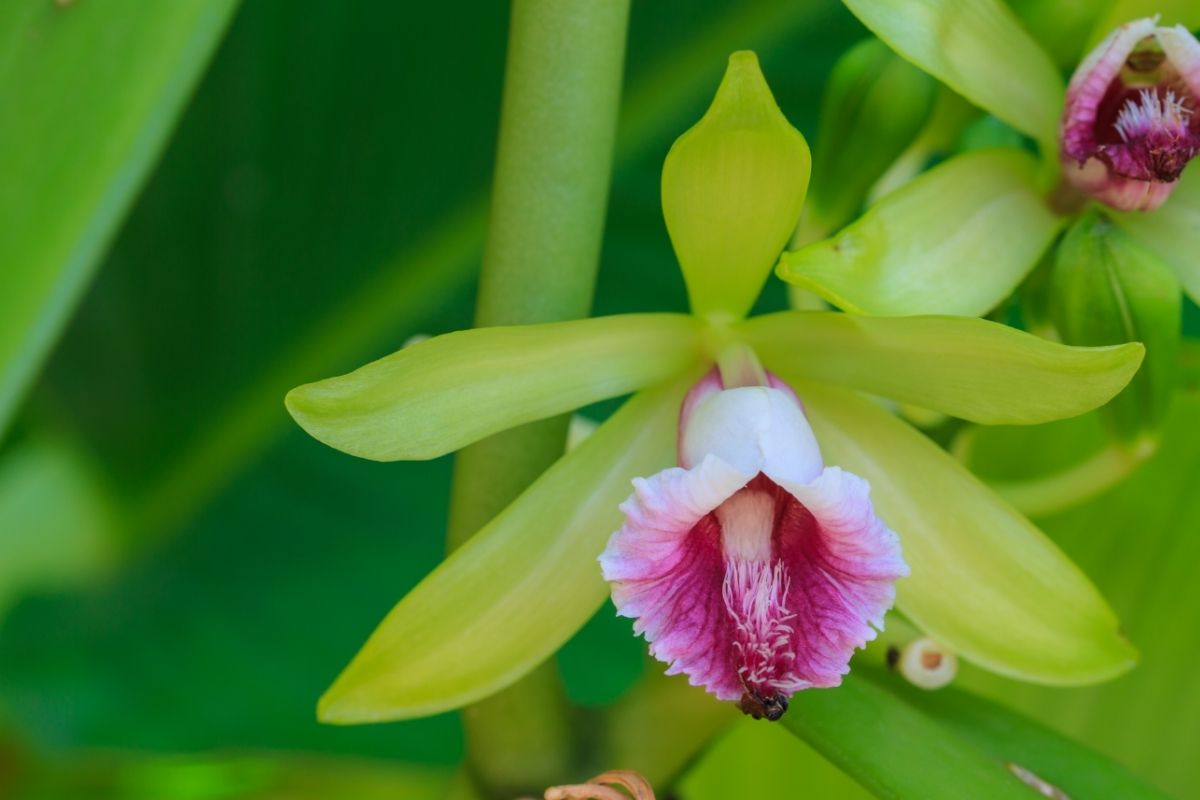
Vanilla pilifera is another species of vanilla orchid native to Southeast Asia.
This terrestrial climbing orchid has a thick stem and succulent leaves which are oblong and around 10-14cm in length. This plant also has light pink to dark purple veins, with 3cm long hairs running from the apex down to the mouth.
The inside of the vanilla pilifera can range from light to bright pink, and it’s surrounded by four or five light green flowers. The pink inner often has a ruffled edge and can appear hairy or fuzzy on the inside.
8. Dillon’s Vanilla

Dillon’s vanilla, or VI. dilloniana, is in Florida, Cuba, Puerto Rico, and Haiti, particularly in moist forests, with elevations of up to 150 to 750 meters.
The flowers of Dillon’s vanilla grow up to 6cm long. This plant is distinguished by its starlike flowers with a trumpet-shaped, 3-lobed lip which is edged with a rich purple color.
Unfortunately, the eradication of only famous population of Dillon’s vanilla in Florida occur, although some plants can still survive in cultivation.
9. Vanilla Abundiflora

The vanilla abundiflora is a perennial climbing plant with succulent stems of up to 10-20 meters long. This plant grows into other trees and supports itself with its aerial roots, which are from stem nodes.
The vanilla abundiflora is often epiphytic or later becomes epiphytic when the lower portion of the stem starts to die. The seed pods of this vanilla plant can come from the wild and use as vanilla flavoring.
Vanilla abundiflora has a unique shape. It has a trumpet-like appearance, with a very long, distinctive inner flower, usually surrounded by three or four greeny-yellow flowers.
10. Vanilla Aphyla
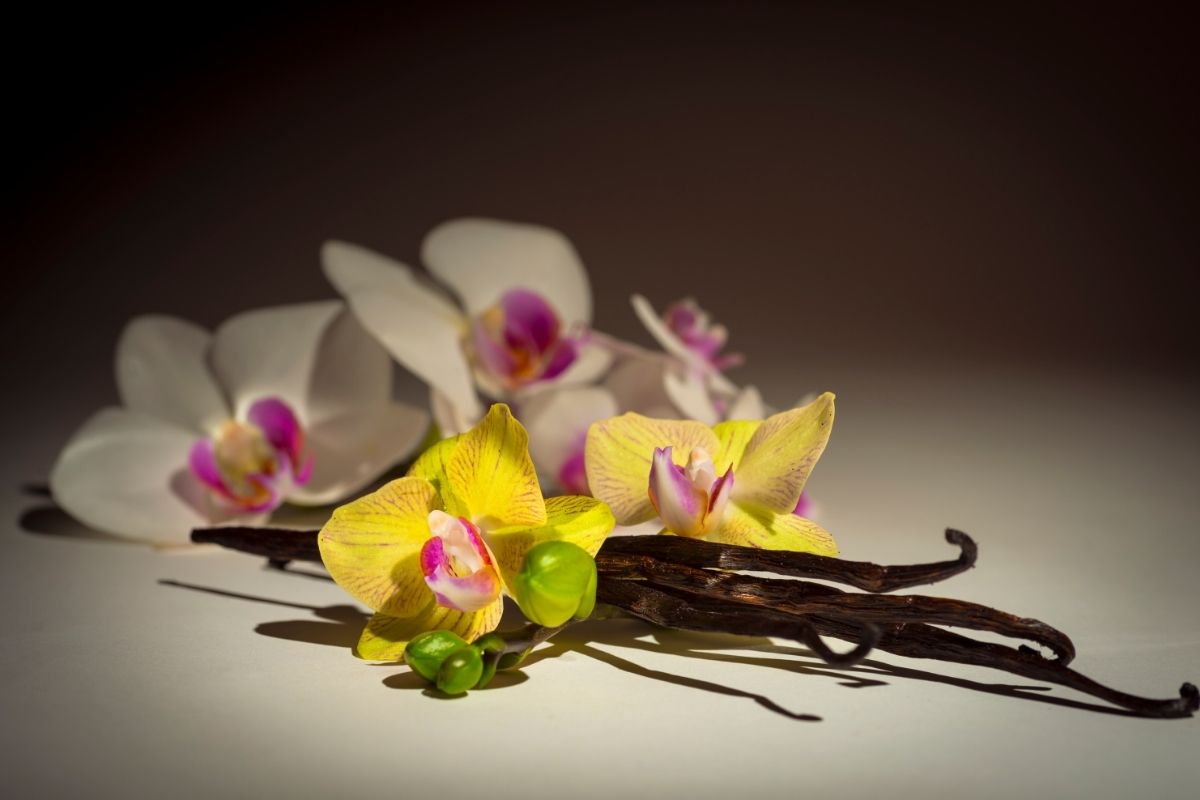
The vanilla aphyla is a species of vanilla orchid, native to southeast Asia. This plant is in various regions of southeast Asia, including Thailand, Laos, Singapore, and Malaysia.
Like most other members of the vanilla genus, the vanilla aphyla uses its own fleshy roots to keep it supported as it grows.
The vanilla aphyla is smaller than some other species. It usually grows in a ‘starfish’ shape, with yellow flowers and a pink-tinged inner fruit.
11. Vanilla Bahiana
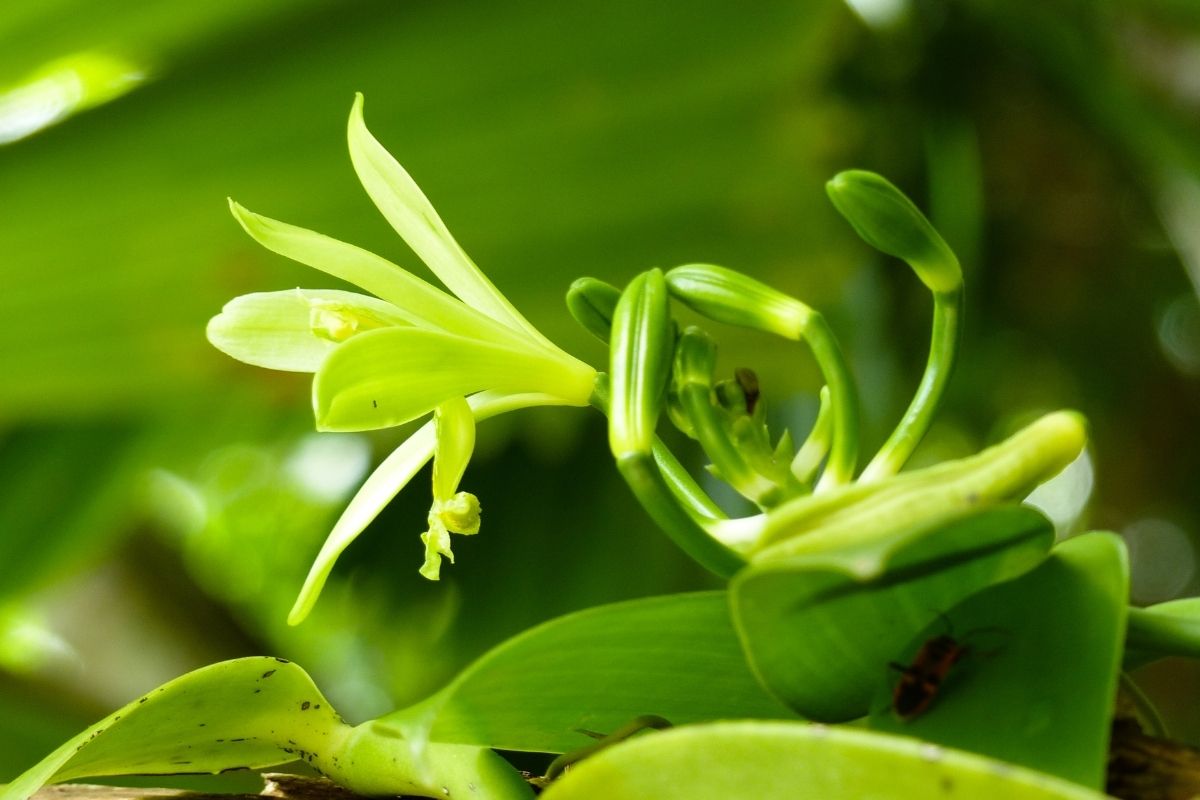
The vanilla bahiana is another species of vanilla orchid located largely in eastern brazil. These vanilla plants are natural climbers, and like other species, their fruit can be in use to create a pure vanilla extract.
Vanilla bahiana has large, thick green leaves. Four leaves usually surround its pale white flower, and the edges of the inner flower often appear ruffled or bearded with a yellow tinge.
The vanilla bahiana, although endemic to Bahia, is rare. It’s also not a popular choice of extract for commercial use or manufacturing.
12. Vanilla Bicolor
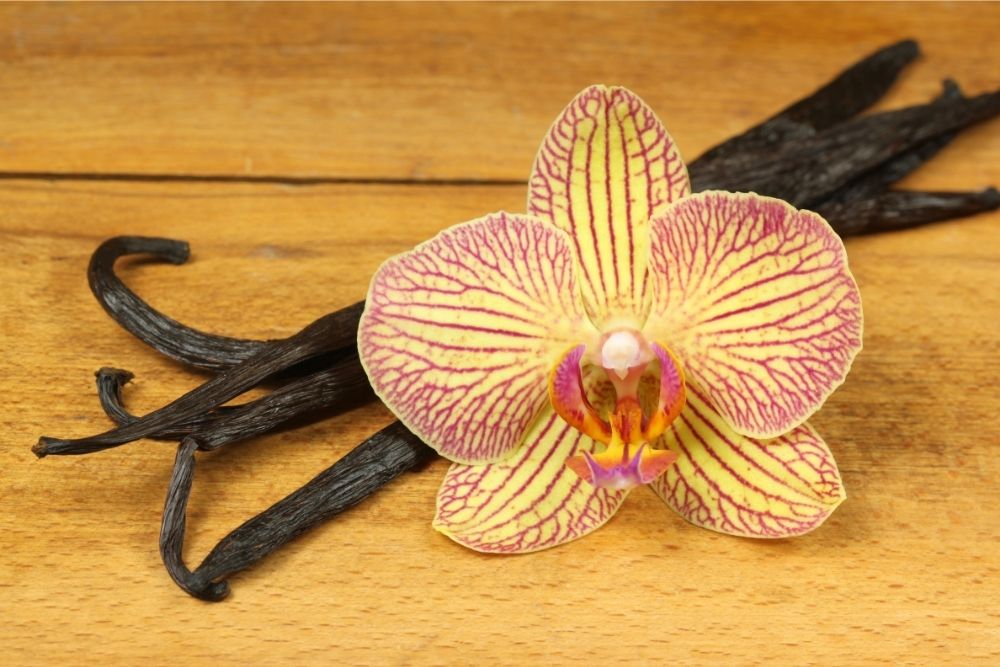
The vanilla bicolor is native to southern tropical America and the Caribbean. Vanilla bicolor has a light green, thick body, with a pale green and white flower, with a slightly yellow inside. This species is widespread, and it’s a hemi-epiphyte and one can often find it in the neotropics.
Vanilla bicolor is usually in swampy environments, particularly along rivers and ponds in human areas. Vanilla bicolors often occur at higher densities when found in southern Peru.
Final Thoughts
Vanilla is one of the most popular flavorings in the world. Vanilla can be in use in medications, in perfume fragrances, and even in foods and beverages.
Furthermore, this much-loved fragrance and flavoring has a rich history, with all extracts stemming from one of the hundreds of species of the vanilla orchid. With so many orchids growing in the wild, the smell and taste of vanilla extracts can vary largely.
Most vanilla orchids grow in tropical climates, and some species are so rare that they’re valuable and highly favored by chefs and manufacturers across the world.







